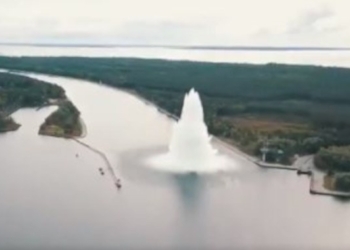Getting a tennis court constructed is a great thing if you want to add value to your property. Tennis courts come in several types, including concrete or clay. They often include a surrounding fence so that players don’t have to chase the ball as much as well as a court, a net, and sometimes some seating.
Constructing a tennis court is not so simple, because of the grading that is involved with the property. The area itself adds great value to a property because it gives it a certain function, but the landscaping of the tennis court also adds value. This value holds true for any gardening or additional yard work that is done around the tennis court.
Tennis courts can have a wide variety of looks, but the more picturesque your court is, the more value it holds. The exception to this is when you put a very fancy type of court surface in, such as a clay court. Putting in a very fancy material like clay will raise the value quite high, even if you don’t landscape the court area very much.
Tennis court construction requires some planning if you want to raise the value of the finished product as high as you can. You will need to keep in mind a few things. One is that while plants add value to a court, they also require water. Sometimes the water will leak onto the court, and sometimes the plant roots will attempt to crawl under the court. Really expensive courts will have plants that are farther away from the court so they don’t leak water or give the court root damage. Another option is for the plants to be bricked in underneath the soil or put in a raised bed. This will keep both water and roots away from the court.
Second, you will need to consider how the court receives sunlight. Decide whether people will be playing in the morning or evening most often, and arrange the position of the court accordingly. You want the court to receive quite a bit of sunlight. It’s good to arrange some shade for the seating if you can. A small tree or large hydrangea or roses is a good idea.
Tennis court construction is mostly about creating a great space to play in. Make sure that your court is accessible and that you take your time with the contractor as he grades the area so that no surprise bumps pop up later. The area may need several feet of large rock, then finer rock, then finally gravel and fill dirt. Be sure to speak with your contractor to plan where the landscaping will go if there is any, and arrange for any water hookups and surround fencing that you need before the grading begins.
Depending on what you are adding to your court, the area to be graded may be significantly larger than the actual court surface. Plan ahead for any trees that need to go in and make sure that fencing and net support holes are dug in the right place at the proper depth.
Tennis Court Installation: How to Keep it Simple
Getting a tennis court installed can be complex. Between grading the property and making sure the net stays level and square, there are a few things to worry about. To keep it simple, you can schedule a hotel stay for a few days so that you aren’t disturbed by the tractors grading the property. Depending on how much rock and gravel has to be added or removed from your area, it could take a few days to a week to properly grade the court area.
Construction includes digging a few feet down usually, so plan on some pretty heavy equipment being in your yard or on your commercial property. Sometimes people add special layers of rock or gravel after taking out another type. You will want to discuss with your builder whether that is a good option for you.
The dirt inside the court area also needs to be a certain grade in order to maintain level. So, plan on heavy clay or silt removal if you have that on the property. The dirt has to be of an even type; for example, it cannot be silty at one end of the court and full of gravel at the other end. Even if you have some dirt already, it’s important that it is at least commercially re-mixed so that all the dirt on the area is the same. Ideally, you will get a sterile and weed-free dirt mix to put down that replaces any old dirt.
Aside from scheduling a few days away from the tractor noise, you will want to have handy a full layout of your tennis court installation plans. Depending on what you are using for the court surface, installation may take anywhere from a few days to a few weeks.
Installation plans include a schedule, materials, and the dimensions of your finished court with the landscaping included. People can make an installation fairly complex if they have an uneven yard or things like steps included. To keep it simple, get your tennis court installation planned by a pro. A professional court planner or architect can work with your landscaper to make sure that your court lives up to your dreams visually. The idea is to hand off most of the work so that you can just sign people in as they start construction, and let your planner take care of the rest.
Even a planner can’t do it all by himself, though. They still need to see your vision for the final tennis court installation. To share this with them, take them for a stroll through your local nursery and discuss what you want next to the finished court. Keeping it simple could include a few hardy trees that don’t shed needles and a small hedge. But it could include a bit more than that as well, such as hollyhocks, hydrangeas, roses, or some other tall floral that works as a border wall of sorts. A small pop of color is a good idea for a simple landscaping layout, so consider adding just one or two floral elements to your finished tennis court installation.













